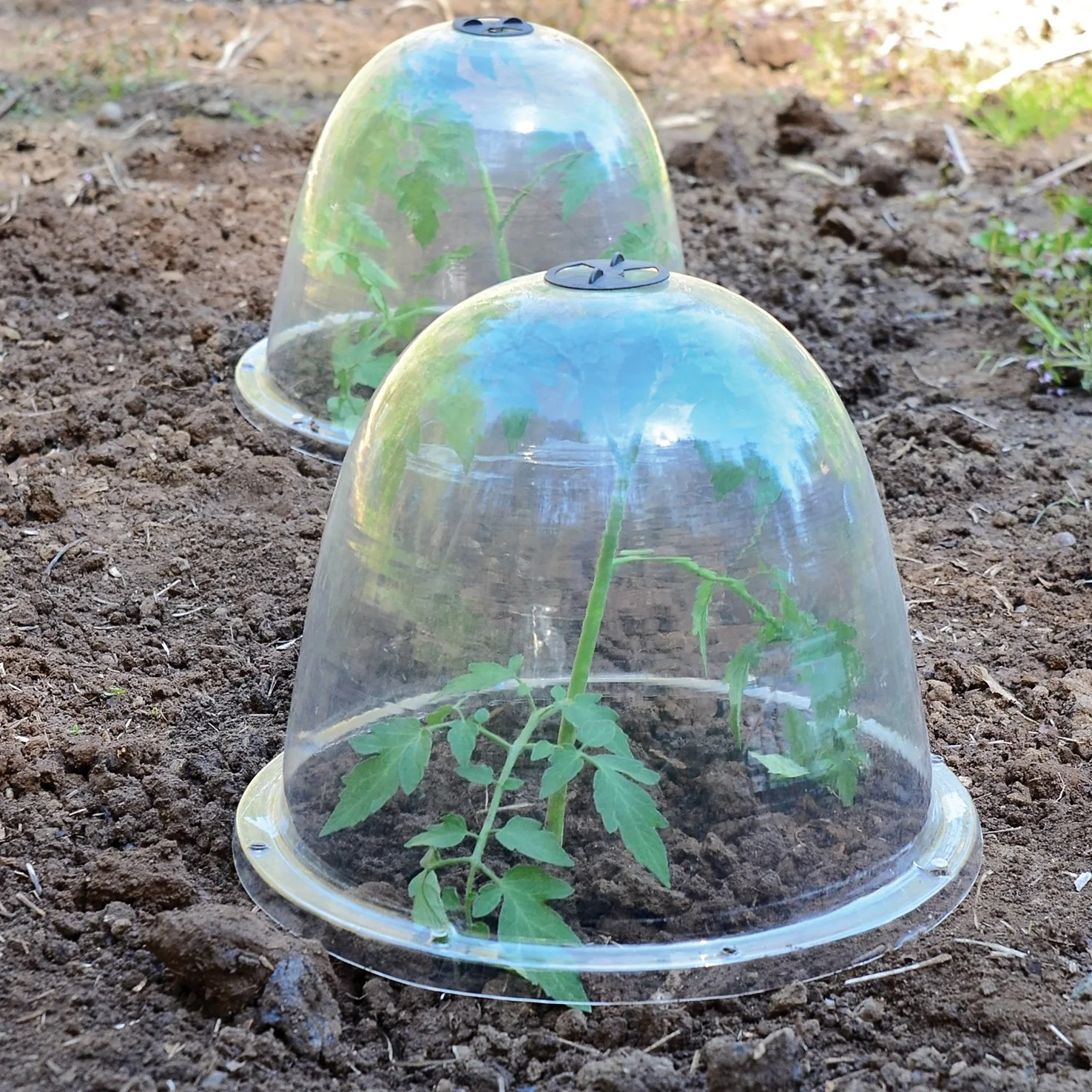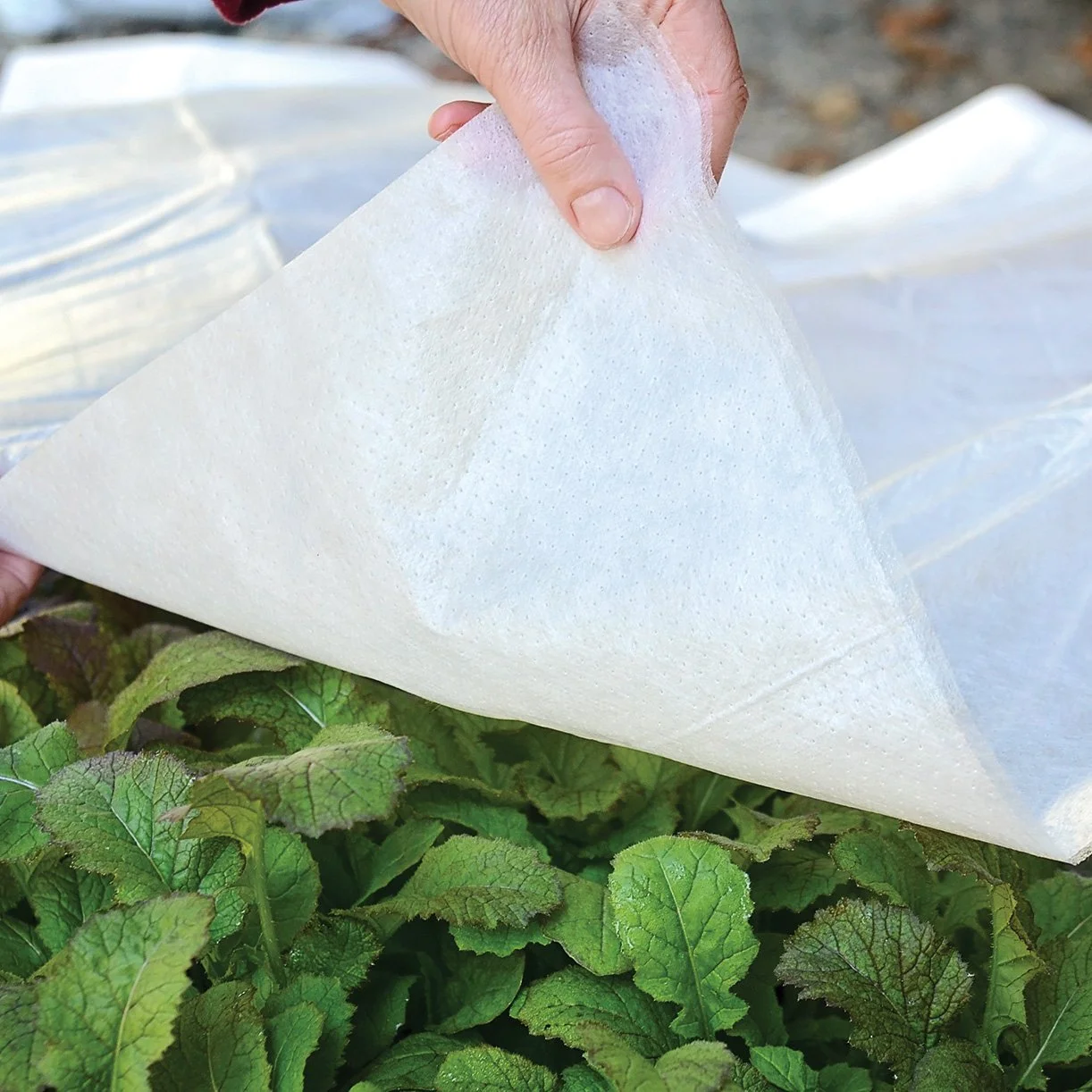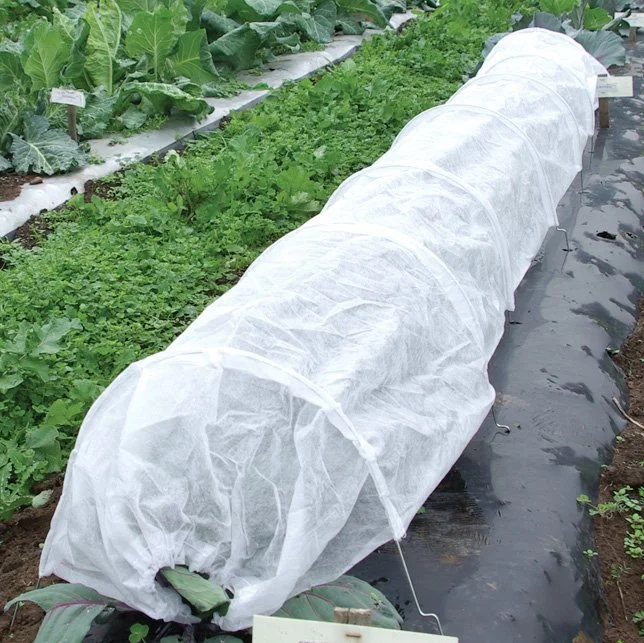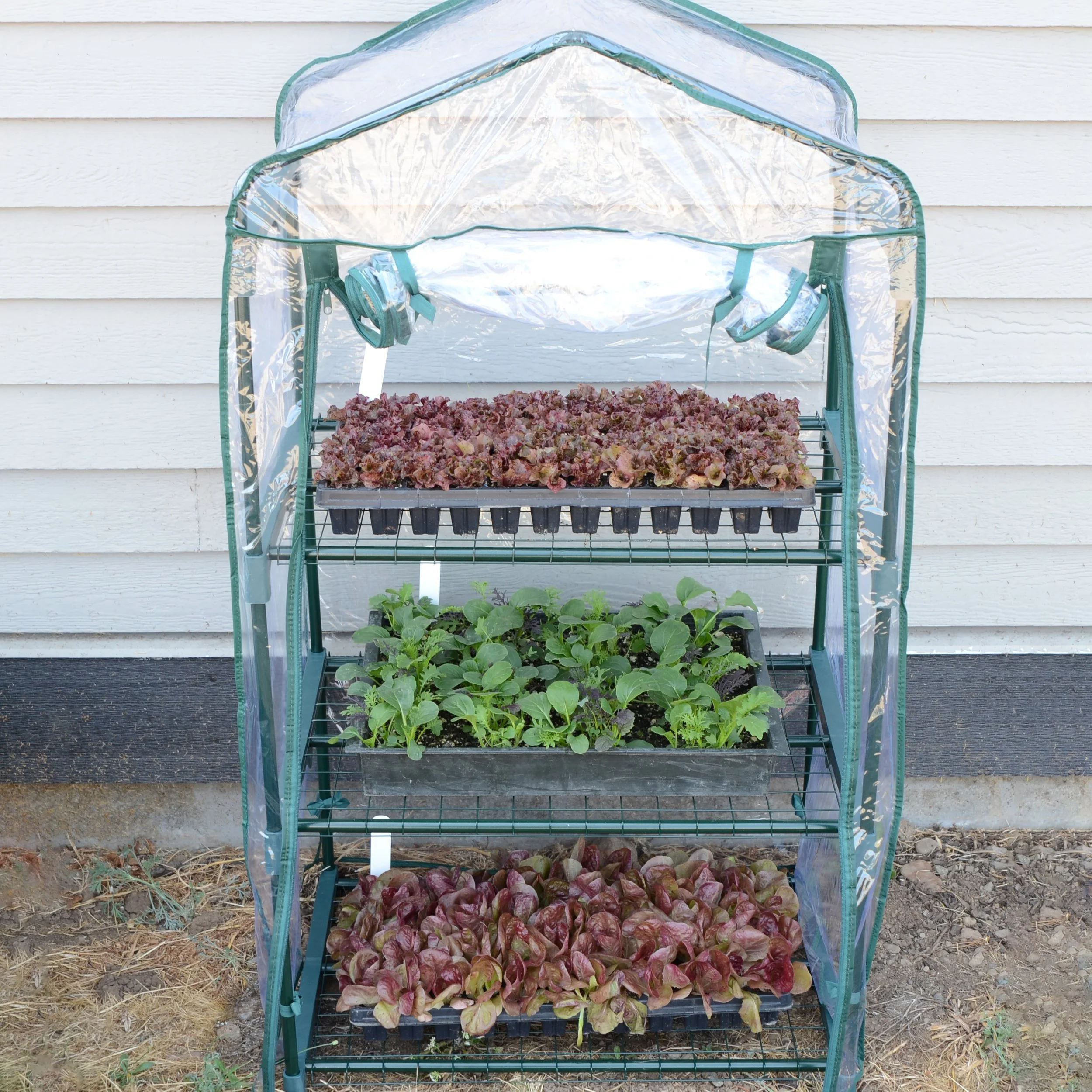Extending the Growing Season
If you’re like me, you know the sadness that comes as the garden season comes to an end and we prepare for winter, as well as the excitement when a new garden season begins each spring. There never seems to be enough time to garden, especially in chilly northern climates with short growing seasons. Thankfully, there are several options for extending the growing season! From choosing cold-hardy varieties to building a greenhouse and everything in between, we’re sure there’s a perfect solution to give you just a little more time in the garden!
Cold-Hardy Varieties
Growing cold-hardy or dual-season varieties of crops in your garden is a relatively easy and cost-effective way to extend the growing season. There is a plethora of options to choose from including lettuce, peas, broccoli, and more! We always recommend growing your own garlic, too. This is a great way to get a little bit more gardening time in at the end of the season and to continue harvesting fresh food from your own backyard! We’ve made it easy to select cold-hardy varieties with our Fall/Winter Catalog.
2. Cold Frames
Cold frames are a little bit like mini greenhouses. They consist of a frame, typically made of wood or metal, and transparent material, such as glass or plexiglass, to provide heat to plants via the sun. They also help protect the plants from cold overnight temperatures. It’s important to be able to vent the cold frame utilizing hinges on the lid to ensure the plants don’t get too hot and get enough airflow. While you can purchase the materials to make cold frames, they can also be made from recycled materials you may already have around the house. Heat mats can also be added to cold frames to extend the season even more. Cold frames can be used at the beginning or end of the season to grow cool-season crops, such as those in the Cruciferous family, and can also be useful to harden off heat-loving crops, such as peppers and tomatoes, at the beginning of the season. Check out our version of a cold frame here.
3. Hot Caps, Cloches, and Water Walls
The term “hot cap” refers to anything that is put over an individual plant that acts like a mini greenhouse to trap heat from the sun. Cloches and water walls are considered hot caps, but there are many other kinds of hot caps made from a variety of materials. Hot caps work by soaking up heat from the sun during the day, which increases the daytime temperature and allows warmer overnight temperatures for the plant it covers. You can purchase hot caps, such as our Victorian Bell Cloches or use materials such as milk jugs or 2 liter bottles. Just ensure that any hot cap you utilize is weighed down somehow and that there are vents at the top. You may need to remove the hot cap during the day to keep the plants from getting too hot.
Water walls are a unique kind of hot cap as they rely on water within tubes to trap heat and maintain warmer temperatures. The water-filled tubes soak up the warmth during the day and slowly release it overnight. These work well at the beginning of the season and may allow you to transplant nightshades several weeks earlier than normal. You can check out our water walls here.
4. Plastic Mulches and Other Warming Mulches
Plastic mulches are an excellent way to heat up the soil in the spring. Many plastic mulches require a specific technique for application to guarantee effectiveness. For example, the soil must be smooth and level, touching the plastic, for heat to transfer. Clear plastic, however, does not need complete contact with the soil to be effective. It also heats the soil more than other plastics, such as black plastic mulch, using condensation on the soil-facing side of the plastic to reduce heat loss. There is definitely a science to using plastic mulch – not only with the application but also with selecting the correct color, planting the crops, and providing irrigation. However, it can be a great option if you’re willing to put in the work and research.
If you aren’t a fan of using plastic mulch in your garden, you may want to consider biodegradable mulch, such as paper mulch, or landscape fabric. Each option has its pros and cons, and it may take some experimentation to find the solution that works best for your space and needs. Check out our selection of mulches here.
5. Row Covers
Floating row covers are a great way to protect your plants from frost as well as insects. Whether planted in the spring or the fall, row covers can help trap heat and make the growing environment more suitable for your crops. Most row covers are made of synthetic materials and there is a wide range of options to choose from, allowing different amounts of light in and providing varying degrees of insulation for the plants, although all row covers allow rain to soak through.
Row covers are placed over the crops after they are planted. They should be anchored down well on all sides as plants can be damaged if the fabric blows up in the wind, allowing cold air in. It is important to allow some slack in the fabric, so the plants have room to grow. Be mindful when using row covers on crops that require insect pollination – the cover should be removed when they begin flowering to allow insects access.
When selecting a row cover, pay attention to the weight of the fabric. Light row covers work well if your only goal is to protect the plants from insects. They allow the most amount of light in and are designed to allow heat to escape. They will not work well for extending the season. Medium and heavy row covers will, however, work well for extending the season, depending on your needs. Medium row covers help keep the air and soil temperatures warmer for your crops. They work well in the spring to help protect more sensitive crops until temperatures have regulated and are useful in the fall to keep crops such as cool-season greens alive just a little bit longer. Heavy row covers provide the best protection from frost, but also block a substantial amount of sunlight, so they are best used temporarily to protect crops from overnight freezes and should be removed during the day once the temperatures have reached a safe level.
We have several options for row covers available. For a medium-weight row cover, check out our Reemay and for a heavier duty row cover, consider our Frost Blanket.
6. Low Tunnels
Low tunnels are the next step up from floating row covers and may utilize the same materials, just with extra support. Low tunnels are exactly what they sound like – a tunnel low to the ground that covers the crops to provide heat and protection from frost. Just remember to open the ends of the tunnel during warm, sunny days and close them back up before the temperatures drop for the evening. Our Fleece Tunnel is a great, easy option for introducing a low tunnel to your garden. You can also purchase just the Hoop Support Wires if you want to use your own fabric.
7. High Tunnels
High tunnels have been gaining popularity over the years and are an excellent way for people with large gardens or commercial farmers to extend their season. High tunnels are semi-permanent structures, usually covered with plastic that is removed at the end of the season. They are tall enough for an adult to stand up in, at a minimum, although some allow small machinery to be utilized. High tunnels are different from most of the other options on this list as the frame, generally made of metal, usually gets left up year-round, and the high tunnel itself is typically utilized for the entire season. In addition to providing protection from frost, high tunnels heat up the soil faster, allowing crops to be planted in the ground sooner, and can help protect crops from weather events such as heavy rains and hail. Commercial high tunnels can be a bit of an investment and may not be as feasible for the home gardener, but offer benefits that other options don’t, making them worth consideration if you have the space.
8. Greenhouses
Greenhouses, of course, are the gold standard of season extension. There are numerous options available on the market, from a small, tiered, temporary greenhouse such as our Three Shelf Greenhouse to a larger, albeit still temporary, greenhouse such as the Sunbubble. Permanent greenhouse structures are the be all end all of season extension, and while they may be spendy, there has been a push to make them more available to the home gardener. If you want the ultimate season extender, consider adding a greenhouse to your property and reap the benefits of year-round growing with the addition of a heater (where necessary) and more structured growing space such as shelves and tables.
As you can see, there are many options available for season extension, and if you’re looking to get that extra time in the garden (and beat all your neighbors to some homegrown tomatoes), consider utilizing one or a combination of the options listed above. As always, don’t hesitate to reach out to our customer service team for help selecting the perfect solution for your garden.
Author: Ashley W.











